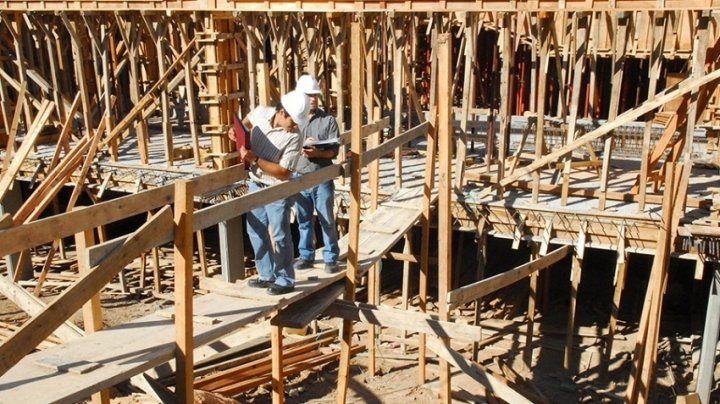
After a few days of “markets” in panic with increases in parallel dollars, the Indec confirmed that the real economy is still in intensive care even though the Government wants to show that we are doing well. industrial activity fell 14.8% in May compared to the same month in 2023, while the construction collapsed by 32.6% in the same period.
The INDEC showed that the industry performed 0.2% below the level of April, meaning that this sector has not yet hit bottom and the recession continues.
Of the sixteen divisions of the manufacturing industry, fifteen showed year-on-year declines. In order of their impact on the overall level, declines were recorded in “Basic metal industries”, 25.0%; “Food and beverages”, 6.4%; “Non-metallic mineral products”, 32.4%; “Wood, paper, publishing and printing”, 18.4%; “Machinery and equipment”, 22.0%; “Furniture and mattresses, and other manufacturing industries”, 33.6%; “Rubber and plastic products”, 25.8%; “Chemical substances and products”, 8.3%; and “Other equipment, apparatus and instruments”, 28.1%.
#DatoINDEC
The industry fell 14.8% year-on-year in May 2024 and 0.2% compared to the previous month https://t.co/QT05MyFvYk pic.twitter.com/mzRF4RFBzJ— INDEC Argentina (@INDECArgentina) July 5, 2024
There were also declines in “Motor vehicles, bodies, trailers and auto parts”, 19.7%; “Textile products”, 21.4%; “Metal products”, 10.3%; “Clothing, leather and footwear”, 8.7%; “Tobacco products”, 14.8%; and “Other transportation equipment”, 10.3%.
In contrast, the only division that showed a slight increase of 2.6% was “Oil refining, coke and nuclear fuel”.
For its part, the construction index recorded a 32.2% drop in the cumulative total for the first five months of 2024 compared to the same period last year.
#DatoINDEC
Construction fell 32.6% year-on-year in May 2024 and rose 6.2% compared to April https://t.co/htf2VIw4q6 pic.twitter.com/1NoGpc13uP— INDEC Argentina (@INDECArgentina) July 5, 2024
The data on apparent consumption of construction inputs in May 2024 show, compared to the same month in 2023, a drop of 60.4% in ceramic sanitary ware; 48.9% in round iron and steel for construction; 47.8% in asphalt; 47.2% in granite and limestone mosaics; and 41.8% in ceramic floors and coverings.
There were also decreases of 36.7% in plasterboard; 35.8% in hollow bricks; 31.9% in ready-mix concrete; 28.5% in other inputs (including taps, seamless steel pipes and glass for construction); 27.2% in Portland cement; 25.7% in plaster; 14.1% in lime; and 3.7% in construction paints.
Job’s lose
The Government’s program plunged the economy into depression, that is, a prolonged, deep decline with a destructive impact that was very difficult to reverse on employment, wages and the productive structure. Thus, GDP fell 5.1% in the first quarter With sharper declines in industry, construction and the SME sector, tax collection also fell. This led to an increase in poverty (which affects 55% of the population), unemployment and inequality.
The INDEC report showed the impact of the decline in construction activity on employment. The information refers to jobs for which contributions are made to the pension system. In April 2024, this indicator registered a drop of 16.8% compared to the same month of the previous year. In the cumulative period from January to April 2024, this indicator showed a decrease of 14.5% compared to the same period of the previous year. In April, 58,326 jobs were lost compared to November.
The government’s adjustments are destroying the economy, and the consequences are falling on the popular majority with deteriorating salaries, pensions and social programs, and more poverty. The ongoing plundering must be confronted.
Source: www.laizquierdadiario.com

